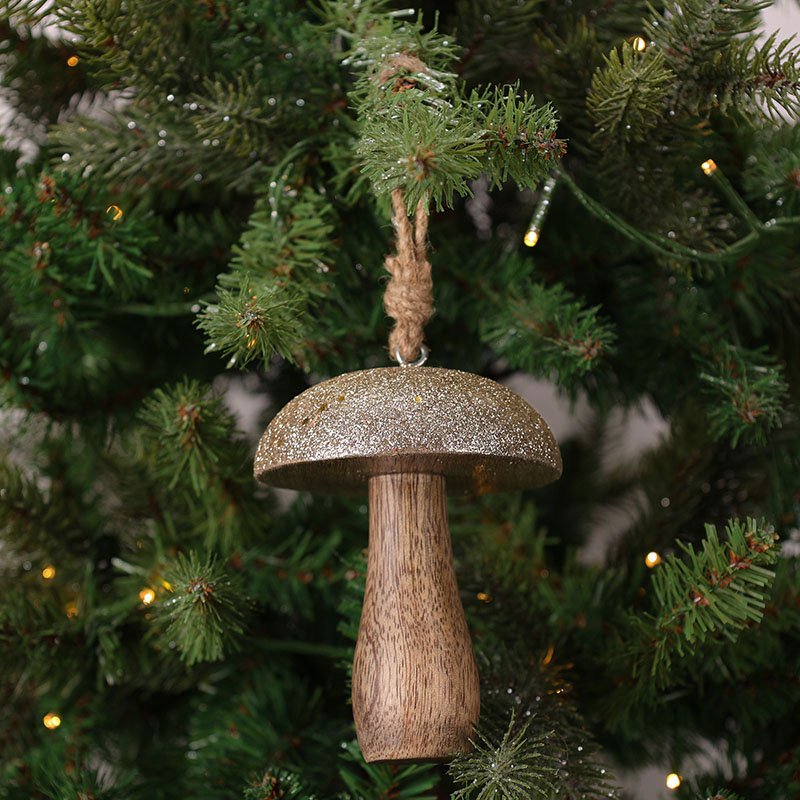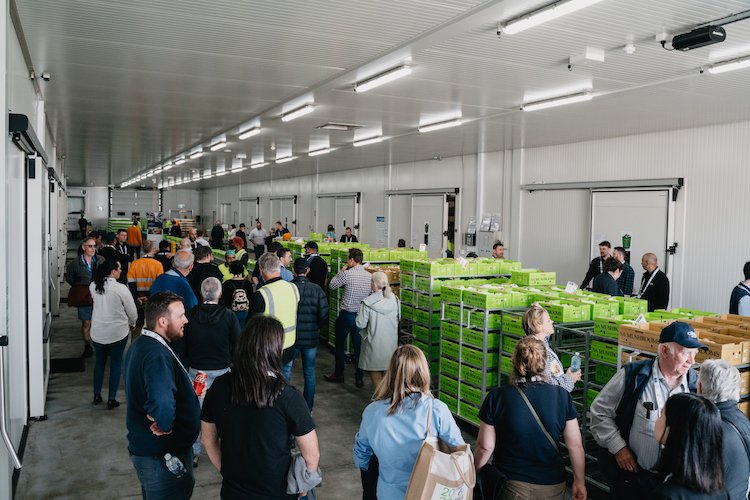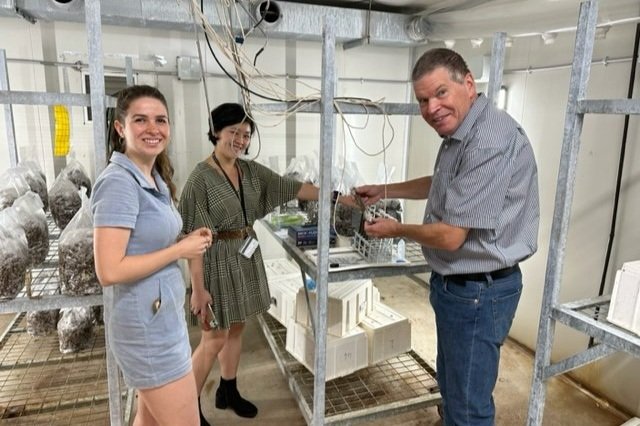Webinar Recording: Food safety certification FAQs with Clare Hamilton-Bate
Confused about food safety certification? Bombarded with requirements that are not relevant to mushrooms? Worried about the auditor coming?
Food safety expert Clare Hamilton-Bate will launch our 2023 webinar series to answer all your FAQs and bust some common myths. There will also be an opportunity to ask Clare questions at the end of the webinar.
This webinar was produced as part of the MU21003: Mushroom industry communications program project. It is funded by Hort Innovation through the Mushroom levy and Australian Government contributions.
MushroomLink Bulletin December 2022
In this edition:
MushroomLink summer issue out now
Safe mushroom certification
Introduction to food safety for mushroom farm workers
Dr Jenny Ekman at the AMGA conference
New factsheet – safe chemical storage
Upcoming webinar - Food safely certification FAQs with Clare Hamilton-Bate
Fact sheet: Storing Chemicals Safely
A new factsheet on chemical storage – and keeping your shed clean, safe and organised – is now available. The factsheet includes:
Important design elements for a good chemical shed
Tips for storing different classes of chemicals
Key inclusions for worker health and safety
Safe Mushroom – A new food safety code of practice designed for mushroom farms
Mushroom farms that are supplying the major retailers are unavoidably familiar with food safety certification programs. They may be audited to Freshcare, or another base program, with HARPS on top, plus Sedex and – potentially – other retailer-based requirements.
Anyone implementing a food safety standard on farm will know that there are a large number of criteria which have no relevance to mushroom production. For example, DDT used years ago in the bottom paddock will not affect the mushrooms, nor is the crop likely to be contaminated by passing kangaroos or leaking septic systems. Mushroom production is not made unsafe by local flooding (unless there is major damage to infrastructure), and there is no ‘planting material’ to be considered.
Third party audited food safety and quality programs can be expensive to implement and audit, especially for small growers. They include issues which may be only tangentially related to food safety – such as labelling, the potential for food fraud and worker health and safety. Keeping the required records and ensuring compliance can be a full time job for many businesses. While a requirement for supply to some customers, they are beyond the reach of smaller, family based farms.
However, food safety is just as important for somebody growing a few blocks in a shipping container as for a large, high-tech shelf farm. To the consumer, mushrooms are a commodity; they don’t differentiate one farm from another. If a food safety outbreak was to occur, it would affect the whole industry, not just the individual grower.
To bridge this gap, the MU20000 team (Extension and adoption for food safety, quality and risk management) have developed the ‘Safe Mushroom’ standard.
Whereas a standard such as Freshcare includes more than 30 pages of compliance criteria, Safe Mushrooms is just over three. This is because it only includes elements that directly affect food safety of mushrooms.
The aim was to allow small farms to demonstrate that they are following safe practices, without the time and cost of higher-level programs. To do this, the requirements have been kept as simple as possible. Growers essentially need to show that they have:
a. considered potential sources of contamination
b. implemented strategies to reduce risk and
c. kept records where appropriate
Most of these are simply good management practice, so should not impose additional costs on the business.
The team have developed examples of the information required, including farm and production facility maps, a typical operations flow chart for mushroom production, work instructions and risk assessments for growing media and casing. There are also record sheets for activities like chemical application and staff training, as well as scheduling cleaning and pest management.
The next step is to trial the program to check how easy it is to implement, and whether additions or subtractions are needed.
Free training and assistance will be provided. A second party audit will be done remotely by another member of the project team, at no cost to the business.
It should be emphasised that this program does not meet the current supply requirements of the major retailers. However, it will provide a food safety foundation and evidence that a farm is following safe practices.
Note that microbial testing of mushrooms and irrigation water is also available through project MU20000. These test results meet all food safety certification requirements (e.g. Freshcare), not just those of Safe Mushroom.
If you are interested in trialling this new program at your farm, please contact Jenny Ekman jenny.ekman@ahr.com.au or 0407 384 285
Associated Resources:
Introduction to food safety for mushroom farm workers
Food safety certification programs, such as Freshcare and HARPS, require all staff to have some basic food safety training. As a minimum, staff must be aware of basic personal hygiene requirements.
This video provides a simple, 20 minute food safety induction suitable for all new workers, regardless of whether they are driving a forklift or picking mushrooms. It explains why food safety matters, different types of hazards that might occur on a mushroom farm, and - importantly - what staff need to do to avoid contaminating the product.
Storing chemicals safely
A chemical shed may not be the most glamorous, action packed or exciting place on farm, but it can certainly give a strong impression as to how the business is run. A well-kept, clean, and orderly chemical shed suggests a clean and orderly business. An auditor encountering a dirty, disorganised shed may well expect other aspects of the food safety system to be likewise.
Mushroom farming in Ukraine
Oldest compost yard in Ukraine.
Despite the challenges of war in Ukraine, this world leader in food production is advancing rapidly with increased production capacity, poised to deliver quality mushrooms to export markets.
Alternative casings and a sustainable mushroom industry
Mushrooms are a low impact food. As vertical farms, their land footprint is small, and energy and water inputs into mushroom crops are much lower than comparable foods. Consequently, mushrooms have an excellent CO2eq rating. This ‘green’ image, coupled with great taste and an ever-growing list of health benefits, weaves a sweet narrative of mushrooms as a sustainable food source for a growing world population. There is just one little snag. Casing, or more specifically, peat casing.
Inside the Marsh Lawson mushroom research centre
Research and development underpin new technology. For the mushroom industry this is no different. A dedicated research centre is one driver of important developments, as industry seeks ways to adapt
and respond to challenges.
Developments in mushroom harvesting
Of all horticultural industries, mushroom cultivation is the most tightly controlled. Mushroom growers are not at the mercy of the weather, crop cycles are quick, and everything from moisture to atmosphere to temperature can be tweaked to optimise quality and yield.
MushroomLink Magazine Issue 03
The third issue of the new MushroomLink magazine is now available. Please contact admin@ahr.com.au to organise a hard copy version of the magazine or be put on the mailing list.
Articles:
Developments in mushroom harvesting
Inside the Marsh Lawson Mushroom Research Centre
Alternative casings and a sustainable mushroom industry
Phone a friend for on-farm help
Mushroom in-store sampling
When it comes to planning dinner, nearly half of Australian cooks are last minute larry’s, providing the perfect opportunity to remind shoppers of the wonders of mushrooms as they do their dinner shopping. With this key statistic in mind, the Hort Innovation marketing team developed the Mushroom In-Store Sampling Program.
When it comes to planning dinner, nearly half of Australian cooks are last minute larry’s, providing the perfect opportunity to remind shoppers of the wonders of mushrooms as they do their dinner shopping. With this key statistic in mind, the Hort Innovation marketing team developed the Mushroom In-Store Sampling Program.
Phone a friend for on farm help
When you have a pest or disease problem on-farm that you are unsure of, or when you need to confirm the right way forward, what do you do? For Neil Newman of Country Farm Fresh Mushrooms, the answer is as close as the computer and the phone.
When you have a pest or disease problem on-farm that you are unsure of, or when you need to confirm the right way forward, what do you do? For Neil Newman of Country Farm Fresh Mushrooms, the answer is as close as the computer and the phone.
Mushroom Bulletin November 2022
In this edition:
MushroomLink Summer edition out soon
Feeding mushrooms – the ins and outs of nitrogen in mushroom compost
What's new in mushroom compost biology? - Dr Michael Kertesz
Roland van Doremaele - Efficient harvesting systems part one
MushroomLink Survey
Hort Innovation Mushroom Fund annual report
AGORA
Mushroom in store sampling
2022 AMGA Conference
The AMGA conference was a resounding success. The industry was able to gather for the first time in years to listen to a range of fantastic over the two days. MushroomLink has developed a podcast series and recordings of the R&D session to give those who were unable to come, and those who could use a refresher, a chance to hear great information from both international and local speakers. This Page will have a range of video presentations and podcasts from speakers at the conference.
Podcasts
Please note: The MushroomLink Podcast is hosted on most podcast hosting sites. Click here to find out where it is hosted or search “Mushroom Link” on your podcasting app of choice.
MushroomLink at the AMGA conference 2022: Jack Lemmen - Efficient harvesting systems part two
MushroomLink at the AMGA conference 2022: Folkert Moll - The future of Mushroom sustainability
MushroomLink at the AMGA conference 2022: Ralph Noble - Peat alternatives
Presentations
What's new in mushroom compost biology? - Dr Michael Kertesz
In this webinar, Dr Michael Kertesz (the University of Sydney) updated industry on the latest research into mushroom compost biology. Nitrogen, microbial communities and climate change are all on the agenda.
Marsh Lawson Mushroom Research Centre and PCR Disease Testing - Dr Gordon Rogers (Applied Horticultural Research)
In this presentation Dr Gordon Rogers (Applied Horticultural Research) provided an update on the Marsh Lawson Mushroom Research Centre (MLMRC) and the PCR disease testing service, a service program that was developed from trials run at the centre.
Dr Rogers' presentation includes past achievements, new trials, potential future trials and how results will be communicated to the industry. He also covers the potential for a new site should the existing site become unavailable.
They also showcase the PCR mushroom disease identification service that is provided by AHR. This service has been a key outcome of the MLMRC. It was developed through the MU12007project (Development of a pilot mushroom farm disease monitoring scheme) and was run by the University of Sydney in collaboration with Applied Horticultural Research, AusDiagnostics, Dr Warwick Gill and Judy Allan.
Australian mushroom industry pest and disease update - Dr Warwick Gill (University of Tasmania)
In this presentation Dr Warwick Gill (University of Tasmania) provides an update on the pest and disease situation for the Australian mushroom industry. This includes new and emerging pests and diseases, the pest and disease watchlist, and how the industry should respond to diseases on their farms. Dr Gill also highlights the upcoming MU21007: Pest and disease management for the Australian mushroom industry project, giving an outline on how the project will function.
Food safety, quality and risk management and MushroomLink - Dr Jenny Ekman (Applied Horticultural Research)
Dr Jenny Ekman (Applied Horticultural Research) gives an update on the MU20000: Mushroom food safety extension and adoption project. Highlighting the need for strong food safety practices for the industry.
Dr Ekman also provided an update on the MU21003: Mushroom industry communications programme (MushroomLink) project. She covered what it is, who it targets, why its needed and how it is delivered.
AMGA farm tour at Pure Compost
AMGA farm tour at SA Mushrooms
Hort Innovation Annual Fund report 2021/2022
What happened in the Mushroom Fund last year?
The 2021/2022 annual report for the Mushroom levy funds is out now.
The report covers what has been delivered this year, how the R&D levy has been invested over the year and how the fund is being managed.
A list of minor use permits for the potato industry, current as of the 15th of August 2022, is also provided.
Mushroom Farm Hygiene video
This video explains the steps of mushroom farm hygiene with special reference to the fungal disease Lecancillium or dry bubble
MushroomLink at the AMGA conference 2022: Flavia Fayet-Moore and Damien Belobrajdic - Nutrition from mushrooms
CSIRO researcher Dr Damien Belobrajdic and nutritionist Dr Falvia Fayet-Moore (NRAUS) are each advancing the case of mushrooms as a super food through research and advocacy.
We know mushrooms are healthy, but to inspire and promote their wider use in the food industry, evidence is required. Australian research is providing this evidence by showing that the mechanisms by which mushrooms help lower cholesterol is akin to that of oats.
But how can this help boost the Australian mushroom industry?
In this podcast, Damien discusses how his work with CSIRO (one of the first well-designed studies into mushroom’s cholesterol lowering properties world-wide) is the first step in achieving an FSANZ heath claim, and Flavia makes the case that mushrooms exemplify the ‘food as medicine’ concept.
Want to see more from the AMGA conference? click here to view presentations and listen to other podcasts.
MushroomLink at the AMGA conference 2022: Ralph Noble - Peat alternatives
Dr Ralph Noble
Rockwool, clay minerals, coal tailings, coconut coir, green wastes. There is a long list of potential peat alternatives, but how realistic are they in replacing peat in a commercial mushroom farm and what are the challenges?
If anyone can help us navigate this new era of sustainable casings it is Dr Ralph Noble.
Dr Noble has been researching peat alternatives in the UK for a number of years and has a clear idea about what works and what doesn’t.
He is also confident that, by 2030, there will be mushrooms grown in Australia without the use of peat.
Fresh from the AMGA conference in Adelaide, Dr Noble has a candid chat to MushroomLink’s Dr Jenny Ekman at the Marsh Lawson Mushroom Research Unit about the peat-free future of casing, emphasising that it is not a question of if, but when.
Want to see more from the AMGA conference? click here to view presentations and listen to other podcasts.
MushroomLink at the AMGA conference 2022: Folkert Moll - The future of Mushroom sustainability
Folkert Moll, Kekkilä-BVB
As the pressure to move away from peat mining grows, coupled with other global supply chain pressures, alternative sources of casing substrates is the key issue for the sustainable future of the mushroom industry.
Despite these pressing challenges, Folkert Moll from Kekkilä-BVB in the Netherlands believes that the future is bright. With heavy research investment into peat alternatives, and commitment to the rehabilitation of peat ecosystems, the horticultural industry can be completely peat-free by 2050.
In this short interview at the recent AMGA conference in Adelaide, Folkert outlined his company’s efforts in sustainability, and hinted at some very exciting European research in alternative casings as part of the Bioschamp project.
Want to see more from the AMGA conference? click here to view presentations and listen to other podcasts.





































